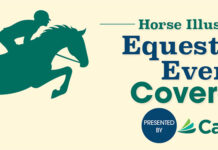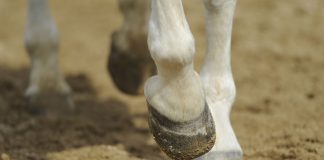
You’ve waited 11 long months for your mare to produce a healthy, vibrant foal. You have painstakingly ensured that she has had the right feed, the right vaccinations and the best pre-natal care available.
Foal Health Indicators in the First Hour of Life
Normal foal behavior is a numbers game; once born, if it takes your mare’s foal any longer than two minutes to breathe, or longer than three hours to nurse, call the vet ASAP to ensure your new baby has the best chance at quality life. Even if your foal is healthy, schedule a vet call within the first 24 hours of birth so your baby can get a good once over.
A healthy foal will begin breathing within seconds of breaking the amnion (the sack in which the foal is born). Within two minutes, he should be breathing regularly at about 60 breaths per minute.
When Does a Newborn Foal Stand and Walk?
After about five minutes of rest from the exertion of being born, the foal should lift his head. A normal foal will be responsive to stimuli at this point.
While this time frame may seem very short to us humans, whose babies generally take 12 months to learn to walk, a horse is still instinctively a flight animal, no matter how many generations of your mare’s family have been companion animals. It’s in your foal’s DNA to get to his feet as quickly as possible to avoid the threat of predators.
Once the foal has been born, he will typically stand within the hour, normally after several failed attempts. Though it can be tempting to go in and “help” a foal stand when you see him fall (usually quite dramatically), resist the urge. Standing is something he needs to learn on his own; interfering now could disrupt the mare/foal bond.
Newborn Foal Nursing
As soon as he is steady, the foal will attempt to nurse from the mare. Your foal may seem lost as he noses walls, corners, in between the mare’s front legs or along her belly in an attempt to find her udder. The mare should gently guide him toward her teat, and the foal will begin to suckle. This suckling behavior is instinctive in horses.
It’s critical that you as an owner can recognize normal foaling behavior. Any abnormal behavior, or the lack of completion of any of these normal behaviors, can be cause for concern.

Nutrition for Foals
It may seem like your foal does nothing but eat and sleep in his first few weeks of life, and for good reason. Foals stand and nurse about every 20 minutes. At about 2 weeks old, the duration of these sessions will decrease as the foal begins to nibble on grass or hay. By 5 to 7 months old, 70 percent of a foal’s nutrient intake will come from sources other than milk, which is why weaning is recommended about this time.
Early Training for Foals
Learning in foals is progressive, meaning that each experience your foal has overlaps with another to produce lasting change. There is a vast window of time to influence foals–up to their first birthday—that takes advantage of a foal’s natural curiosity and openness to new activities. During this time, your foal should learn:
- to accept handling of his body, including picking out his feet and brushing, as well as handling of his face and ears
- to wear a halter
- to lead with a lead rope with minimal resistance
- to accept the feel of a blanket and saddle pad
Once your foal has learned the basic foundation of being a well-mannered horse, you can teach him things like how to stand tied, how to load into a trailer or how to follow humans over unusual surfaces and obstacles.
Imprint Training Your Horse
“Imprinting” is a procedure that involves being present at the foal’s birth and gently restraining and handling him. It must be done within hours of birth. This handling, done correctly, will set the foal up for success later in life by introducing him to things like having his hooves handled and exposing him to potentially scary things like blankets and saddle pads or even tarps and bags.
The goals of this type of training also include submission and bonding to humans. This early handling can reduce fear and increase ease of handling, which will serve your foal well as he grows into a full-grown horse.
The key to imprint training is to provide the right amount of handling at the right time to best benefit the foal. While this can be tricky to quantify, the goal is not to scare the foal into submission, but to get him to relax and trust that you will do nothing to harm him.
Training Your Foal through Reinforcement
Horses learn through reinforcement, either positive or negative. Reinforcement requires you to have good timing; whenever you reward your foal, either with a scratch on the withers or with the removal of pressure, this is the action he will learn to do.
Reinforcing behaviors takes time. You have to wait for the right behavior and patiently work through the bad behaviors. The key when a foal is learning is to start small. For example, if your baby is learning to be haltered, don’t only reward him when you get the entire halter over his head and latched; he should be rewarded for even letting the halter touch him. When you reinforce small steps, your foal will not see learning as overwhelming. Always build on something your foal has already learned.
Help Your Foal Learn
Once born, a foal is constantly learning, being taught either by his dam or by the humans that surround him. Though you may have no control over his developmental milestones, it’s your job as his owner to ensure that he becomes a horse that respects humans and their wishes.






Timely article. I am sure I will have to reread it again. This spring I will have a new foal from my mini.
great info